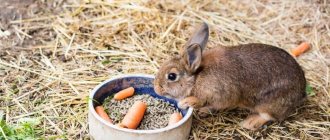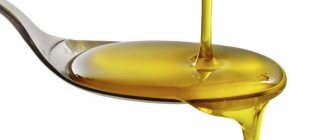Broilers are a meat breed of chicken that is raised specifically for meat. In a short period of time (approximately 45 days), an excellent weight gain can be achieved, at which point the bird is ready for slaughter. Naturally, for this you need to provide proper care by creating the correct diet for feeding broilers and observing the diet.
At poultry farms, broilers are fed mainly with special combined feeds, sometimes with additives that further accelerate the growth of muscle mass. At home, you can save on raising broilers by giving them greens, vegetables, kitchen waste, etc. for food. And if you feed the bird with environmentally friendly feed, you will get tasty, juicy and tender meat.
What is the best food to feed and how to prepare food for broilers with your own hands? How much feed does a broiler eat? What can you feed a bird for rapid growth? We will answer these and other questions in this article.
Feed consumption for broilers, how much feed is needed before slaughter
Broiler chickens are fed twice a day. Consumption per day per adult is about 120 grams, while water consumption is 250 grams. The serving weight per bird increases to 170 grams if succulent feed is included in the diet.
Table of consumption of dry feed (mixed feed) for broilers
| Prestart | Start | Fattening | Finish | |
| Age (days) | 0-5 | 6-18 | 19-37 | 38-42 |
| Gain (in grams) | 15 | 33 | 54 | 56 |
| Daily feed intake (in grams) | 15-21 | 25-89 | 93-128 | 160-170 |
| Feed consumption per broiler per period (in grams per head) | 100 | 760 | 2410 | 830 |
| Daily gain (in grams) | 15,00 | 33,11 | 54,27 | 56,14 |
This feeding scheme provides for proper distribution of the amount of feed at different periods of the life of broilers. The bird receives the necessary amount of substances useful for growth and evenly builds muscle mass.
How much feed is consumed per broiler during the period “Prestart” - “Fattening” - “Finish”
Below is a table that provides more detailed information about the feeding standards of birds from birth to the 26th day, that is, practically during the most critical period of life.
| Broiler age (days) | Live weight (kg per head) | Feed consumption (grams per day per head) | Feed consumption since the beginning of cultivation (grams per head) |
| 0 | 0,042 | 0 | 0 |
| 1 | 0,052 | 14 | 14 |
| 2 | 0,066 | 14 | 28 |
| 3 | 0,082 | 15 | 43 |
| 4 | 0,1 | 16 | 59 |
| 5 | 0,12 | 22 | 81 |
| 6 | 0,142 | 25 | 106 |
| 7 | 0,166 | 28 | 134 |
| 8 | 0,193 | 31 | 165 |
| 9 | 0,223 | 35 | 200 |
| 10 | 0,256 | 39 | 239 |
| 11 | 0,293 | 44 | 283 |
| 12 | 0,334 | 49 | 332 |
| 13 | 0,379 | 55 | 387 |
| 14 | 0,427 | 61 | 448 |
| 15 | 0,478 | 68 | 516 |
| 16 | 0,532 | 75 | 591 |
| 17 | 0,589 | 83 | 672 |
| 18 | 0,649 | 91 | 765 |
| 19 | 0,712 | 99 | 864 |
| 20 | 0,778 | 106 | 970 |
| 21 | 0,846 | 112 | 1082 |
| 22 | 0,916 | 118 | 1200 |
| 23 | 0,988 | 123 | 1323 |
| 24 | 1,062 | 128 | 1451 |
| 25 | 1,137 | 133 | 1584 |
| 26 | 1,213 | 137 | 1721 |
Conditions for fattening broilers for slaughter
Chickens for meat production are unpretentious, but their diet and maintenance determine their early maturity and weight.
The bird requires special feeding. To raise healthy chickens, feed is carefully selected and chicken growth programs are implemented.
Broiler
It is important to comply with the requirements for keeping broiler chickens and care for them daily:
- Place. A poultry house is set up for the chickens, kept in cages or on litter.
- The thickness of the litter is a maximum of 10 cm and includes sawdust or other unpressed mass. 18 individuals are allowed to be kept per 1 m2.
- Temperature conditions. In the first week of life, the young animals are provided with a temperature in the range of +26...+33 °C, then reduced to +19...+18 °C.
- Illumination. The chicken coop is illuminated around the clock. The light is dim. The lamp power in the first week is 1.8 W per 1 m2, later 1.2 W - up to the 7th week of cultivation and at the end a 0.6 W lamp is used. Sometimes the brightness of the lighting is the root cause of pecking. Paint the lamp lamp in green or red tones.
- Purity. Regularly monitor and maintain order in the premises. Cleaning and changing of bedding are carried out systematically. To prevent gastrointestinal dysfunction in broilers, feeders and drinkers are washed with boiled water and disinfectants.
- Care. To protect against diseases, chickens are examined every day and fed in a balanced manner. Lethargic and disease-affected chickens are isolated from the livestock and treated.
Feeding broiler chickens: types of feed
A balanced diet is the most important factor when raising broilers.
In other words, along with the feed, the chicken should receive all the nutrients, fats, carbohydrates, vitamins and proteins necessary for active growth. The ideal option for feeding is compound feed. After all, not every breeder can independently prepare a balanced diet in calculated proportions, especially if we are talking about a private farmstead. Compound feed is sold ready-made and contains everything that is necessary for broiler chickens to gain weight.
Why do broilers need medications?
Experienced poultry farmers know that even if all the rules of care and feeding are followed, chickens can get sick. To grow them to productive age and obtain high-quality meat, it is recommended to stock up on such drugs as:
- Prodevit is a multivitamin feed additive for chickens.
- Chiktonik is a therapeutic and prophylactic dietary supplement. Prescribed for vitamin deficiencies, metabolic disorders, stress, and also after the use of antibiotics.
- Vetom is a probiotic that improves metabolic processes and the body's immune defense. It is used in the prevention and treatment of coccidiosis and other diseases of birds. Useful for restoring the body after food intoxication.
- Gamavit is a veterinary immunomodulator. Prescribed for the treatment of any poisoning, anemia, and elimination of vitamin deficiency. Included in the complex of antibacterial therapy.
- Glucose. Its solution is used to strengthen the immune system of small chicks. Together with probiotics, vitamins and enzymes, glucose reduces the risk of inflammation in the gastrointestinal tract and promotes better digestion of food.
- Ascorbic acid. This is a vitamin C preparation that increases the overall tone and protective abilities of the body in chickens.
- Baytril, Baycox, Akolan, Enrofloxacin are antibiotics used for the treatment and prevention of coccidiosis, salmonellosis and other infectious diseases.
- Biovit-80 is an antibacterial drug of the tetracycline series, with vitamin B12. Used for the prevention and control of infections, stimulates the growth of chicks.
Any of the listed products can be purchased at a veterinary pharmacy, but their use must be agreed upon with a doctor.
How much feed do you need to raise a broiler?
We have already provided a table above, thanks to which you can calculate the feed. But in short, from birth to 2 weeks, chickens should receive 38 grams; from 14 to 28 days, the volume should be increased to 100 grams per day. From 28 to 45 days, 150 grams are consumed per head. In 45 days, the bird should gain 2.6 kg of live weight.
Correct feeding technology involves a gradual increase in the amount of feed. Only in this case will the broiler develop correctly and not spoil the digestive system.
DIY nutritional mixture
For an adult, it is not necessary to buy food in the store. You can prepare it yourself using the following recipe:
- 3 gr. feed fat;
- one gram each of chalk and grass;
- 5 gr. feed yeast;
- 8 Gr. barley;
- 13 grams of wheat;
- 17 grams each of fish/meat and bone meal and meal/cake;
- 45 gr. corn.
Reference! The weight of the ingredients is calculated to produce 100 grams of the finished mixture.
Feed for broiler chickens: which ones to choose
Typically, owners of private farmsteads who raise broilers produce their own feed or purchase the feed that they can get. But if you have a choice, then it is better, of course, to understand the compositions and purchase feed for each period of growing broiler chickens for a balanced diet.
Recently, Best Mix feed has been very popular. Its composition is optimally balanced and contains corn flour, soybeans, wheat and its products, sunflower and its cake, salt, fish meal, soda, mineral and vitamin complexes, amino acids and much more.
The same manufacturer produces vitamin and antibacterial supplements that must be given to broiler chickens in the first days of life. The reviews are mostly positive and if you use products from this brand, you can leave your feedback in the comments.
Important! Broiler feed is selected based on factors such as the age of the bird and its breed. An adult must necessarily receive corn, wheat (crushed), peas, barley, small shells, chalk (we have already listed these components in percentage terms above).
What should be included in the diet?
Beginner breeders often feed broilers with complex feeds. They have a high calorie content, and besides, they have everything to develop fully:
corn;
- herbal ingredients;
- minerals;
- vitamins;
- animal supplements.
They are the right choice, as they allow you to build good immunity, prevent diseases and build muscle mass quickly. This feed is granulated, and the composition was selected by a group of poultry specialists. There is no need to cook it: I poured it into the feeder and went on about my business.
Reference! Sometimes novice poultry farmers prepare their own feed to reduce maintenance costs. “Disadvantages” of this method: measuring all ingredients by weight, wasting time on preparation.
Do-it-yourself feed for broiler chickens during the start, fattening and finishing periods
It is not always possible to go to the store and buy ready-made food. However, our site is focused on growing and keeping poultry in private backyards. Therefore, it will not be superfluous to learn how to prepare feed for broilers yourself at home.
Feed recipe for broilers up to 2 weeks
This is a starter feed, but before switching to it, chickens up to 5 days old must be fed finely chopped boiled eggs, low-fat cottage cheese, wet mash prepared with whey, yogurt or milk. If the chickens become airborne, give them a weak solution of manganese.
The starter feed should include:
- Barley (8%);
- Corn dirt (50%);
- Meal or makuhu (14%);
- Finely ground wheat (16%);
- Low-fat kefir or whey (12%).
There is a special feed for hatched chickens - PK-6-1 . But it is much more profitable to prepare your own food based on the above components instead of ready-made granulated food.
Feed recipe for chickens aged 2 to 4 weeks
Such homemade food should consist of:
- Ground corn (48%);
- Wheat dirt (13%);
- Sunflower cake (19%);
- Fish or meat and bone meal (7%);
- Dry skim milk (3%);
- Yeast (5%);
- Feed fat (1%);
- Fresh herbs (3%).
There is factory-made feed PK-6-2 for broiler chickens aged 2 weeks and older. It consists of larger granules and includes meat and bone meal, lysine and vegetable oil.
Feed prepared according to this recipe can be given to broilers until slaughter. Mash can be diluted with curdled milk, whey, and meat broths.
Feed recipe for chickens from 1 month
In essence, you get a finishing feed for broilers with your own hands. If possible, it should include:
- Wheat (25%);
- Barley (25%);
- Peas (10%);
- Corn (20%);
- Soy (20%);
- Sunflower cake (5%).
From the age of 1 month, grain crops such as wheat and barley can be given uncrushed, preferably sprouted.
It is useful to add chalk, fish meal, yeast, and various vitamin and mineral supplements to the above composition.
Features of growing broilers
A bird that has just hatched from an egg needs warmth and light.
In the nursery it should be 300 C, the lights should be on around the clock, there should be a drinking bowl with water and food in the form of crumbs from egg yolk and millet. In the first two weeks, the chicks continuously peck at food and grow rapidly. In the dark the food is not visible. The aviary for chicks should be light, the bedding should be soft and clean. Broilers do not need space. While the chickens are small, 18 of them can fit in one square meter; there will be up to 10 adult birds in this area. But there must be good ventilation. Gradually, as the birds mature, the pen is expanded. Broiler chickens do not need walks, they are not allowed into the yard, and the efficiency of weight gain decreases.
Another way is to cage broilers for fattening for meat at home. Then many more individuals can be placed in a small area. The slaughter of birds begins after 8 weeks. A commercial carcass by this time weighs about 2 kg, the meat is tender and dietary. After five months, keeping poultry for meat is unprofitable. Dietary properties are lost, fattening does not provide rapid weight gain.
If it is possible to purchase chickens, no, a few hens and a cockerel are left for laying eggs for breeding. For good survival, it is better to buy ten-day-old broilers.
What else is useful to add to broiler feed?
Preparing feed for broiler chickens is not a difficult task, the main thing is to maintain balance. But to keep poultry healthy, its diet (especially chickens) can be supplemented with dairy products (a source of animal protein and calcium):
- Serum;
- Buttermilk;
- Low-fat fresh cottage cheese;
- Reverse;
- Curdled milk.
One important thing to consider here is that if you add milk to the feed, it should not be steamed or sour, otherwise the bird will begin to diarrhea.
Other useful additions to food
Nettle. Rich in vitamins A, E, K, carotene, ascorbic acid, microelements. Especially useful fresh for chickens (can be given from 3 days). You can dry it for the winter.
Grass. It, like nettle, can be given in crushed form to broiler chickens from 2-3 days. For the winter, you can dry hay in bundles and hang it in the chicken coop.
Peas. An excellent source of protein that promotes weight gain and growth. It is better to feed chickens in crushed form as part of wet mash for better absorption.
Bread. The bread contains yeast, which has a beneficial effect on weight gain. It is not advisable to give fresh bread; dried crusts are better. Also, never give moldy bread - it can cause poisoning. Although this product is useful, it is not recommended to add it to the main feed too often.
Feeding for fast growth of broilers
If you want your broilers to gain weight faster, follow these rules when keeping them.
- Mandatory inclusion of cereals in the diet: corn, wheat, barley, oats, sunflower seeds.
- Enrichment of feed mixtures with vegetables, food waste, herbs, and fresh hay. The more diverse the species composition of hay, the more beneficial it is.
- Feeding according to the recommended regimen.
- Maintaining microclimate parameters that are comfortable for the bird. No drafts or dampness.
- Using sawdust as bedding material, which, in principle, can be replaced with hay and straw. The maximum height of the bedding layer is 10 cm. By the way, if you have the opportunity to purchase bacterial bedding, do not miss it, since such material is an additional source of heat, which is especially important in harsh winters.
- Drinking fresh, clean, 20-25 degree water. Be sure to keep drinking bowls clean at all times. When washing them, it is advisable to use laundry soap - it reduces the risk of gastrointestinal ailments and infections.
- Compliance with the time frame of preventive measures, seeking help from a veterinary specialist if you suspect a particular pathology.
It is reliably known that broilers gain weight faster when consuming special factory-made feed. Unfortunately, such food worsens the organoleptic qualities of meat products.
Watering broiler chickens
Birds should always have clean and fresh water. Detailed article on how to properly water chickens. You can learn all about nipple drinkers here. And in this article you will learn how to make a drinking bowl for chickens with your own hands. By the way, vacuum drinkers are recommended for broilers (1 piece per 50 birds).
Features of feeding
Feeding broiler chickens kept at home differs from that used in industrial poultry farms. On them, chickens are fed with compound feed or special various grain mixtures, but at home, the diet of birds can be made more varied. In addition to feed, chickens can be fed vegetables and herbs, and mash and grain mixtures from various ingredients can be prepared for them.
If you choose products that are balanced in terms of nutrients, vitamins and minerals, and energy value, then you can create your own proper diet and at the same time save on feed, which is not always of good quality.
Broiler feeding has the following features:
- chickens should have free access to clean and fresh water at a comfortable temperature;
- stable temperature and a certain length of daylight hours. The optimal temperature in the poultry house for broiler chickens aged 1–7 days should be 32–35 °C, at 2–3 weeks – 24–29 °C, over 3 weeks – 20–24 °C;
- Feeding should be periodic, food should be distributed after a certain period of time. This is consistent with their physical characteristics: food passes through the chicken’s gastrointestinal tract in 2–3 hours, after which it begins to feel slightly hungry;
- when using bunker and groove feeders, 1 head should have at least 2 and 3 cm, respectively;
- To ensure that broiler chickens do not have gastrointestinal diseases, they are given a pale pink solution of potassium permanganate 2 times a week.
During fattening, the birds' physical activity is limited, they are kept only in the chicken coop, without walking, so that they do not waste energy on movement, but only gain the required weight.
What not to feed broilers
Despite the fact that chickens are practically omnivores and often feed on pasture, the following foods are contraindicated for them:
- Vegetable and butter;
- Alcohol and fermentation products;
- New milk;
- Soaked bread;
- Sand too fine;
- Boiled potatoes without anything;
- Stale table waste;
- Sausage;
- Chocolate and cocoa;
- Cheese;
- Citrus peeling;
- Jam.
For stable growth, the diet must be varied and not consist, for example, of only mixed feed. This may cause the bird to refuse other feeds.
Feeding scheme for poultry of different age groups
0-5 day
A few words about the microclimate. During this period, broilers are provided with 24-hour dim lighting (recommended shades are yellow and red) and 8 feedings a day. The optimal temperature is 26 degrees.
The diet consists of grated boiled eggs, fresh dill, and grated cottage cheese. Young animals must have constant access to clean, warm water. It is useful to additionally feed with Prestart food (maximum daily dose - 25 g/bird).
6-10 day
The feed mixture is supplemented with finely grated carrots. Chalk or shells are also introduced. Fish oil, vitamin and mineral supplements are very useful. You can’t do without fresh herbs and yeast. You can consider a commercial starting mixture as an additive.
11-20 day
The frequency of feeding is 6 times/day. They begin to feed boiled potatoes, steamed grain mixture (oats + corn + barley + peas), chopped grass. Broilers will grow better after including bone meal in their diet.
21-30 days
This bird is fed four times. She is fed crushed barley, peas, soybeans, and cake. The grain part of the diet is supplemented with wheat and corn flour. Grass and table scraps are also used. Whey is used as a “solvent” for dry mixtures.
31-55 days
It is important to feed 2 times a day for rapid growth of broilers. Whole grains and a soaked combined mixture are used as feed. The bird is fed with Finish factory feed.
You can’t do without sources of minerals - crushed chalk, ground shells, bone meal, fish waste.
Advice! Limit rearing broilers to 55 days of age, as average daily growth is greatly reduced in older birds.
An important point: fresh fish and beets are taboo. Such foods disrupt the functioning of the gastrointestinal tract.
Feeding broilers: some useful tips
- Baker's yeast is very beneficial for the body of chickens. Before adding to food, they are first diluted in warm water (30-40 degrees). For 10 kg of feed you need about 200-300 grams of yeast.
- Broilers eat fresh and untrodden food better, so birds should not get into the feeder with their paws.
- Fill the feeder one-third full to prevent loss and trampling of feed.
- If you notice that a broiler chicken is not eating well, does not come to the feeder, behaves lethargically and begins to weaken, then it needs to be cured. The most effective method is to feed him with a mixture of milk and egg yolk from a pipette 2-3 times.
Additional components when feeding broilers
But that’s not all; further feeding of broilers is also associated with the need to use balanced feed filled with biologically active substances. By the way, almost all feed manufacturers replace expensive natural sources of high-quality protein and amino acids with synthetic ones. Which do not mix well and do not stick to other components of the feed, and often in empty feeders you can see a light powder after feeding, which broiler chicks do not pick up - these are mainly synthetic amino acids and minerals. And if young animals constantly experience a lack of amino acids such as lysine, threonine or methionine, then they will gradually begin to lose muscle volume, and simply gain meat poorly. At home, this problem can be dealt with simply - before feeding, the food is slightly moistened with a spray bottle; by the way, the palatability of the food increases with moistening.
Pay attention to the quality and temperature of the Kurchat's drinking water. 80% of all diseases come to them through water. Water should always be: fresh, clean and at room temperature (18 - 22 degrees). At about 30°C they are already reluctant to drink water, but above 30°C they do not drink water at all.
Now I would like to dwell on the feed itself. No, the disadvantages and advantages of different feeds for broilers will be discussed in another article, but I want to focus your attention on those components that everyone can easily buy and use. I'm talking about adding corn, wheat and corn. As many people have noticed, all these components are already in the feed, so there is no reason to add them.
For reflection, I would like to quote from one of the studies on the development of poultry farming in Russia:
“Recently, the content of corn in the formulation of combined feeds has sharply decreased and the content of non-traditional feed raw materials (oats, barley, rye, triticale, millet, peas, bran, cake, meal) has increased. The inclusion of these components significantly increases the content of difficult-to-hydrolyze compounds in the feed, which reduce the energy nutritional value of the feed, the availability of amino acids in it, as well as disrupt the digestive processes and lead to a decrease in the growth rate of young animals and, ultimately, the productivity of adult birds.”
As we can see from the quote, there are still reasons for adding grain and corn to the poultry diet. But this must be done gradually, by the end of 4 weeks. During feeding, crushed corn and crushed grain are gradually introduced in approximately equal proportions. They begin to feed, replacing with grain in the first 2-3 days, 10 - 15% of the feed, if everything is normal, then gradually increase the share of crushed grain to 35 - 45% of the total diet.
Grain and corn.
It is advisable to moisten the grain 1-2 hours before feeding so that it does not become dry. It’s done something like this - mix all the grain portions in one container, moisten well from the top with a spray bottle, mix and moisten again, leave to stand for 30 - 40 minutes, repeat the procedure - and so on 2 - 3 times. Water consumption is about 300g/kg of grain mixture. Then we add compound feed into the same container, mix everything and feed the pets. From practical experience, I can note that adding grain and corn to the feed significantly changes for the better the density and taste of the resulting chicken, as well as the appearance of the carcass itself. The addition of corn to the feeding diet of broilers of the COBB-500 breed is especially noticeable. Such yellow carcasses leave few people indifferent.
I will also note the economic reason for such a diet - grain, even crushed, costs almost 50% less than compound feed. Some will ask – what about vitamins and supplements? My answer is that with a small portion of the money you save, you can buy a high-quality vitamin complex separately and add it to the food yourself.
You can also add macadamia to the food, but it is given half as much as grain, and it must be soaked separately because... It takes up noticeably more water. But I went a different way.
Here are a few more quotes from a document similar to the first:
“Feeding broiler chickens with the developed compound feed with the addition of phospholipids from vegetable oils of hydrotiated feed using polycation exchanger UPK-1 in an amount of 3% had a positive effect on increasing the live weight of the bird and reducing feed costs per unit of increase in live weight. During the growing period, the average daily gain of chickens was 11.3% greater than the control.”
“The inclusion of rapeseed oil from rapeseed varieties “00” type, selected in Kuban, from the 22nd day of cultivation had a positive effect on the growth and development of poultry. At 42 days of age, this figure reached 2044 g in the experimental group, which is 1.8% higher than the control. The cost of one kg of live weight gain of broilers in the study group decreased by 1.2%.”
Recommendation: Feed compound feed with the addition of rapeseed oil from “00” type rapeseed varieties selected in the Kuban from the 22-day age of the bird until slaughter in an amount of 2% of the weight of the given compound feed.
The same document described the testing of several types of vegetable oils, including soybean and sunflower. Sunflower oil lost for only one reason:
“The use of sunflower oil in feed for poultry causes competition for the human food source. The search for alternative energy feeds and feed additives will solve this problem.”
In terms of other indicators in this experiment, it occupies one of the leading places. This only means that the use of sunflower oil in industrial quantities is unprofitable. And for feeding at home or on farms it is quite acceptable.
Therefore, makukha is completely replaced by the addition of sunflower oil to the feed from 1 to 2% by weight (per 1 kg - from 10 to 20 g).
Important! Don’t even think about using refined table oil; you need simple cheese-pressed oil from the market. It can be given only after 21 days of age (after 3 weeks) and also gradually, bringing the dose to normal.
Now regarding adding grass, green onions, nettles, dandelions, etc. to the diet. If you didn’t know, it is advisable to give them cut into pieces of 2-3 cm. But many simply throw an armful of grass into the enclosure, but still, if you don’t have time to cut, then at least make a completely mesh hanging feeder. So, if you have time, then please, the broilers will only be grateful to you, and this will improve the taste of the chicken and the beauty of the carcass after fattening. But again, new ingredients must be introduced into the feeding diet gradually, starting with small doses and carefully observing the “stool” of the patients. A slight stool disorder at the beginning of getting used to green food is practically the norm. Green food is given without special restrictions, but it is still advisable not to give too much of special fodder grasses - clover, alfalfa. You can also advise that in the autumn-winter season, when there is no longer any natural greenery, you can include self-sprouted grains of wheat or barley, or green onions removed from turnips, into the feeding.
To germinate, the grain is poured into a container and filled with warm water for one to two days, after which the grain is taken out, scattered on any surface, in a warm place, in a layer of about 3-5 cm. Periodically lightly moistening until it germinates. It is not necessary to provide additional lighting; in the dark, more vitamin B2 is produced in the grains, although the appearance of the sprouts is not so bright.
Methods of feeding broilers at a poultry farm
In poultry farms, broilers are raised on combined feeds. Upon reaching one month of age, chopped greens must be introduced. Particular attention is paid to drinking water.
The liquid must be clean, fresh, free of pathogenic bacteria. Before feeding the feed into the feeders, the person in charge of feeding at the plant sends a sample of the feed for analysis! Only after receiving data on full compliance with food requirements, the mixture is served to the birds.
Broilers in factories eat without volume restrictions. Vitamin preparations are given at certain times. The composition is added automatically as you eat.
An important factor is the conditions in which the birds are kept; temperature and humidity are maintained in the premises. Ventilation is required.
Pros and cons of broiler farming
More and more farmers are choosing broilers when breeding chickens for meat.
Advantages of these birds:
- rapid growth and high meat productivity;
- the ability to grow in a limited area;
- increased resistance to external factors, strong immunity.
Broiler breeds also have disadvantages. These include the need for constant feeding, as well as the high cost of feed. To raise a large bird, nutrition must be carefully planned according to age.
Due to the crowding of chickens in a small area, more frequent cleaning and monitoring of health is required, which increases the cost of veterinary care, vitamins and antibiotics.
How to reduce feed consumption when fattening
Despite the fact that when raising broilers at home, it is easiest to feed them with compound feed, you still need to make sure that fattening is as profitable as possible. However, high-quality industrial mixtures can be quite expensive and if you feed chickens only with them, you will not be able to save money, therefore measures to reduce the cost of feeding broilers in the household are considered:
- Preparation of wet mash, which includes crushed or whole grains, succulent feed (root vegetables and vegetables), greens (grass, tops of garden vegetables), boiled potatoes, kitchen waste. Premixes with a balanced complex of minerals, vitamins, and amino acids must be added to these mashes. The distribution of mash must be combined with feeding with compound feed.
- Yeasting of feed so that it is better absorbed in the body of chickens. Yeast can be added to wet mash with green and juicy food, boiled and crushed potatoes.
- Adding dairy products to the mash. You can mix mash not only with water, but also with various dairy products, for example, whey, skim milk, buttermilk, yogurt, etc. These are products that contain animal protein, as well as calcium. Both are very important for the growth and normal development of broiler chickens.
- Feeding with greens. You can give your broilers fresh chopped grass separately or bundle it up and hang it in the coop for the birds to peck at. Birds can get vitamins in their most natural form from fresh greens.
In this way, it will be possible to expand the feeding diet of broilers, diversify it, and make it more balanced.
Another important condition for the normal raising of broilers is keeping the premises and equipment clean. Dirty, wet bedding, as well as unwashed feeders and waterers, are an excellent place for microbes to grow and a potential source of infection. To prevent the bird from getting sick, equipment and the chicken coop must be constantly cleaned, and the chickens must be given antibiotics to prevent possible infection.
Types of feed for chickens
After the first ten days, egg and curd mass can be removed from the diet, and whey can be left until one month of age. Beginning breeders often ask the question: “How long to feed Start?” The answer cannot be clear-cut.
The duration depends on the manufacturers' recommendations. Some companies have an additional “Pre-Starter”, which can be fed only up to a week of age.
In other cases, feeding is divided into the following periods:
- From the first days to two weeks (0 - 15 days).
- After two weeks before one month of age (15 - 30 days);
- From a month to a month and a half (30 - 45 days).
- From one and a half to two months (45 - 60 days).
Advice! The age categories shown on the packaging are approximate. Of course, you shouldn’t throw away the feed if the chickens are older and there is still some mixture left. You can safely supplement the food and then transfer it to the next category.
Manufacturers of the dry composition also indicate the daily dosage of the mixture. The dose is calculated based on the number of birds in the chicken coop. This aspect is important to consider! But what if the birds eat their daily allowance very quickly? Then you shouldn’t “starve” them.
In this case, you need to introduce an additional portion. Otherwise, the birds will begin to lag in growth. The best option would be to install a special automatic feeder in the chicken coop, which will supply food as it is eaten. This way, the chickens can always eat to their heart's content.
It is important that the drinking bowl is also automatic so that the birds can drink at any time.
How to choose chickens?
Breeds
Broilers are the result of targeted selection work to breed a hybrid to quickly obtain high-quality dietary meat products.
The most popular broiler crosses among Russian poultry farmers are KOBB-500, ROSSy-38, 708, Gibro-6, Broiler-61, M. Crosses Smena and Hubbard F 15.
Manufacturers
It is safer to buy broiler chickens from private farms that have proven themselves on the market and at specialized hatcheries.
As a rule, chickens purchased from such producers are viable, active and already vaccinated against major diseases.
The price of broilers offered by large poultry farms is lower, but there is a vicious practice of factories selling culled weak young animals.
The cost of chickens varies depending on age, breed, region, and time of year from 35 to 95 rubles per head.
Age
Experienced poultry farmers who know the intricacies of keeping and have equipped areas for rearing prefer to buy cheaper day-old chicks.
Beginners are advised to purchase young animals aged 5-10 days, as they are easier to care for.
Viability
Healthy, viable broiler chickens are selected for the following characteristics:
- Chickens are active, mobile, responsive to sounds, with a good appetite;
- Clear eyes with sparkle;
- Soft tummies;
- The wings are pressed tightly to the body;
- The feathers on the wings of cockerels are the same length;
- Absence of sea otter plumage;
- Smooth pubescence, without “tufts”.
Important! The crosses ROSS 308 and COBB 500 have slightly enlarged and rounded tummies. The beak and legs may have a bluish tint.
Rooster or hen
For meat broilers this is not a big deal, but if you want to choose, you can find out the sex at chick age by the wings. Spread your wing.
A rooster's feathers will be the same size, while a chicken's feathers will be of different lengths. Regardless of gender, you need to choose chickens that are mobile, active, and have shiny, clear eyes.
If the chicken is weak, sits all the time, and its eyes are cloudy, it is sick and will not live long. A healthy chicken's tummy is soft, not bloated, and tucked up.
The fluff is uniform, the wings in a calm state are not spread out, but tightly pressed to the body. Healthy chicks respond well to sound. If you knock on the box or box in which they are placed, they will rush towards the source of the noise.











